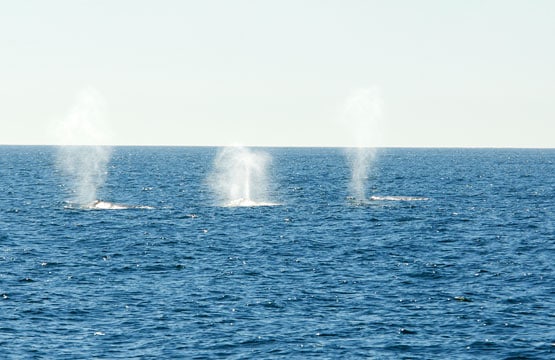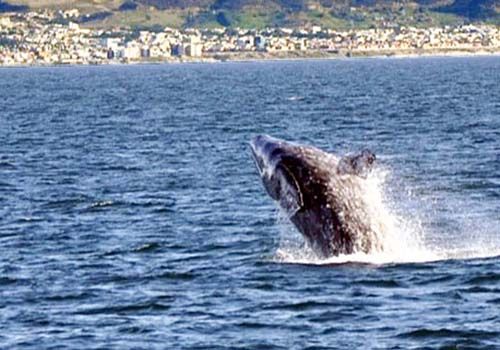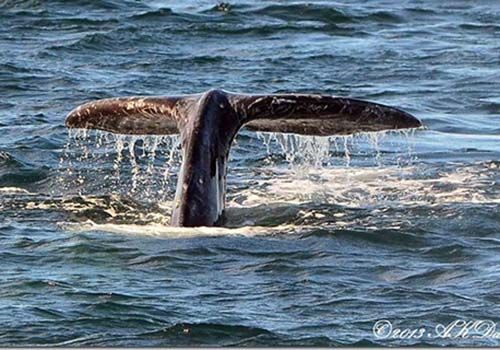San Diego Whale Watching Charters
The southern coastal location of San Diego with it’s unique Mediterranean climate is comfortable for humans and marine mammals alike. With the location being right in the middle of the great annual migration of certain whale species, it is the ideal whale watching environment.
San Diego Whale Watching – California Gray Whale
The California Gray Whale annual migration allows for whale watching beginning in December and lasting through March. It is possible to view the whale migration both when the whale are going south to Baja Mexico to give birth in warmer waters, and again when they come back up the coastline to Alaska for feeding. Generally, the whales are much closer to shore during the migration south and are therefore easier to view.
Each year thousands of Gray Whales take part in the great migration of approximately 10,000 km, which is thought to be the longest migration of any mammal.
The California Gray Whale is actually considered a medium sized whale of the cetacean family and can reach a length of 52 ft. and a weight of 36 tons! As you would suspect, they are called Gray Whale from the gray slate color of their skin as well as the grey-white splotches and scarring left by parasites living on the whale.
The California Gray Whale diet consists of microscopic krill, which they much consume in vast quantities. A unique feature of one class of whales is the baleen, which are similar to teeth, but actually work as a filter, allowing the whales to suck up hundreds of gallons of seawater to eat between 4,500-5,500 pounds each day!
Having been hunted to near extinction, the species has rebounded healthily and now have an estimated population of 30,000 individual whales.
The picture of a whale breaching (taken on a charter) above is somewhat rare to catch behaviorally. Breaching is basically a giant leap breaking the surface of the water and then falling back in with a thunderous slap. This behavior is thought to be related to scratching an itch that the barnacles create, the breaching activity is the scratch. This is one logical explanation; another realistic possibility is that it is plain fun!
Whales of San Diego
Songs
The best time of year to spot a Blue Whale is from mid June to mid September. With San Diego Boat Tours the whale watching route for a Blue Whale travels closer to the Coronado Islands or the Nine Mile Bank area to have a greater chance for an encounter.
Please take advantage of this wonderful opportunity to experience the grandeur of these magnificent creatures of the deep up close on your own private whale watching charter. [Where are All the Whales Article]
Whale Watching Charter – When to watch?
What to Look for When Whale Watching

Characteristically before making the deep dive the whale may display its fluke or tail fin. The fluke is fairly large (around 12 feet) and it helps push the whale under water, propelling the large beast in any chosen direction. If you are lucky to get close enough you will get a chance to notice a knuckled ridge along the spine of the whale and the barnacles taking a free ride as well as the molted gray color of the skin. After a whale submerges you will notice what is called a ‘footprint” – a section of calm water where the whale has been is left behind on the waters surface.
Discover the convenience of accessing your crypto assets securely through ledger-live-ledger.com.
SAN DIEGO WHALE WATCHING – WHALE WATCHING CHARTERS – WHALE WATCHING TOURS
SAN DIEGO CETATION CHARTERS – SAN DIEGO CETATION WATCHING – SAN DIEGO CETATION TOURS


